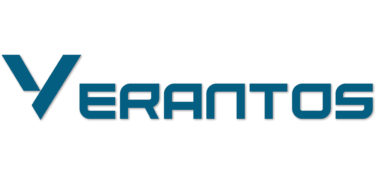Quality content teaches and empathizes. It fills in the gaps between knowledge and understanding. It opens the door to deep questioning and listening. That’s the consensus of the 11 Trailblazer Brand Champions, Marketing Team of the Year Finalists, and Marketer of the Year Finalists who gathered to discuss content and the point of care the day before the 2018 Trailblazers Award Gala this past September. They came to shed light on what goes into creating the kind of quality that moves readers to action, and how, where, and when is it best delivered—to patients, providers, physicians, and other healthcare professionals? Benjamin Assor, SVP, Director of Media Activation, Solve(d), a member of the FCB Health Network, moderated the event; Rodnell Workman, CMO, Health Monitor Network contributed; and the Trailblazer winner and finalist participants included:
- Kendra Fanara Director of Marketing, Marketing and Digital Customer Engagement, Johnson & Johnson
- Helen Gray Medical Director, EMD Serono, Research and Development Institute, Inc.
- Chris Horvath Director of Marketing, Prostate Cancer, Bayer Pharmaceuticals
- Bryce Kater Associate Director of HCP Marketing, Oncology, Bayer
- Kacey Moore Director of Consumer Marketing, Amgen
- Marian Rice Marketing Manager II, Women’s Health, AbbVie
- Sandy Sexton Director, Consumer Marketing, Regeneron Healthcare Solutions
- James Smith Associate Director, Marketing, AstraZeneca
- Santos Torres, Jr., MBA Director of Marketing, Bausch + Lomb
- Matteo Trotta Head of Marketing, Rheumatology PsA, Novartis Pharmaceuticals Corporation
- Betty Webb Manager, Patient Marketing & Digital Health Innovation, Novo Nordisk
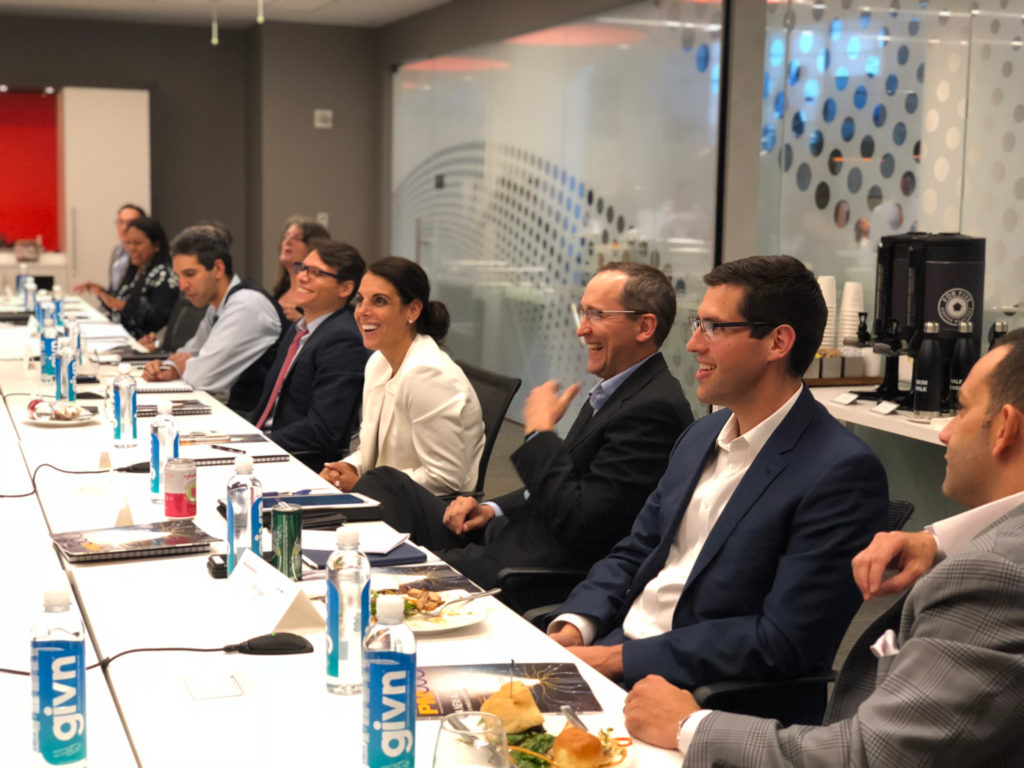
Health Monitor attendees included:
- Irene Broderick, Sales Director
- Augie Caruso, Sales Director
- Chris Darienzo, Sales Director
- Lauren Leonard, Sales & Marketing Manager
- Chris O’Toole, SVP, Sales, Alliances and Advocacy
- Paola Villanueva, Marketing Coordinator
- Mike Weiss, VP, Sales
- Rodnell Workman, CMO
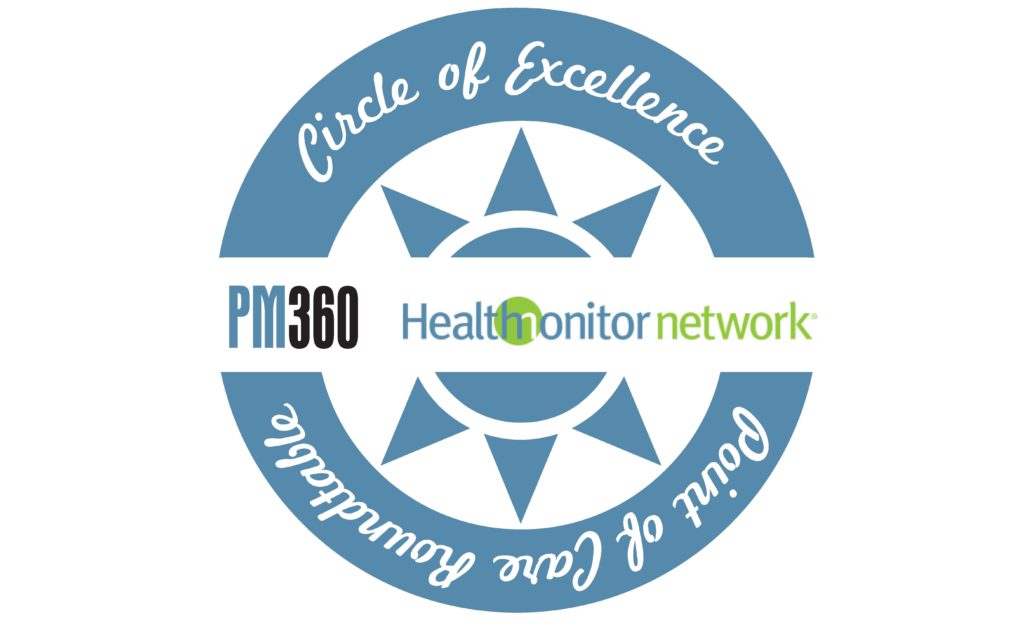
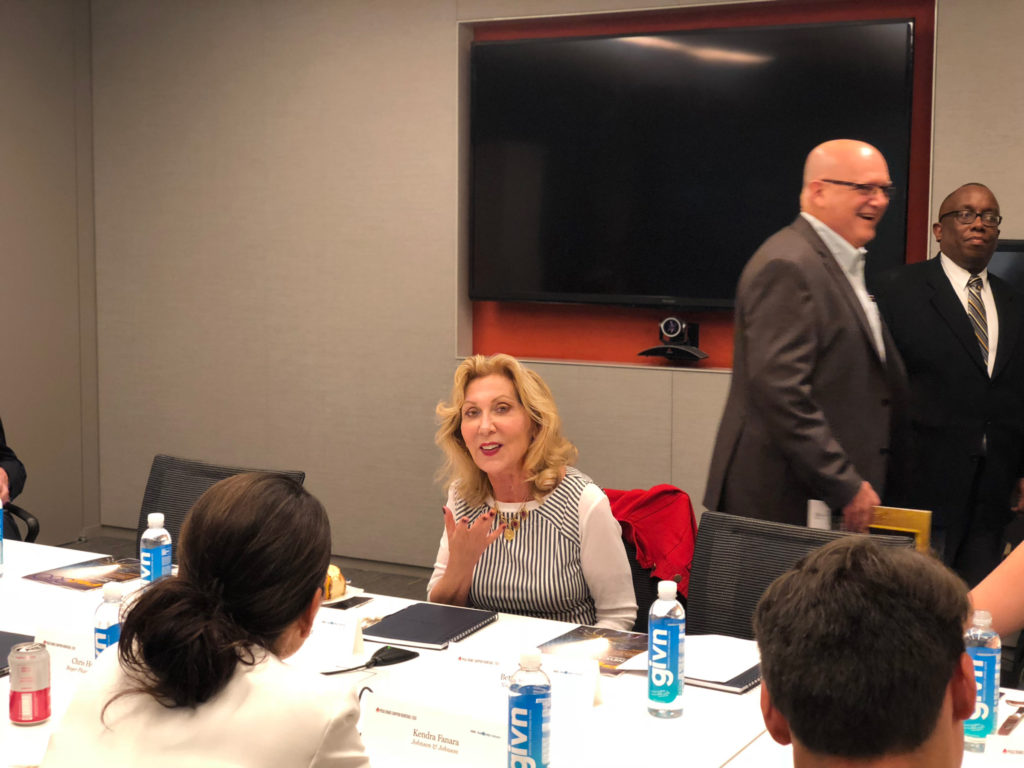
Benjamin Assor: Good morning, everyone. First, I’d like to congratulate all the Brand Champions and other Trailblazer finalists around the table and thank Health Monitor for generously sponsoring what promises to be an exciting discussion. Rodnell, would you like to tell us a little about Health Monitor?
Rodnell Workman: For those of you who may not know Health Monitor, we have been a leader and innovator in DTC and the point of care space for the past 35 years. The point of care industry has made great strides in digital innovation, but what we want to do is transform point of care. We use an extensive, proprietary platform and integrated solutions that are built to deliver results for our clients, provide verified ROI, and the opportunity for deeper engagement with physicians, HCPs, and most importantly, the patient. We can facilitate those conversations using these innovative point of care technologies and the quality content you, as marketers, provide.
Benjamin Assor: And content quality is critical. So, let’s start with what that means to all of us, how the industry has evolved, and the importance. From there, we’ll discuss point of care as a content marketing tool. So if everyone is ready, we’ll start with what content marketing means to you?
Betty Webb: I’ll start. At Novo Nordisk, I manage the general market and also the Hispanic market. I am Hispanic, English is my second language, and my job is to create impactful content that addresses a patient’s concerns, both in English and in Spanish. Hispanics are a very important demographic because by 2023, they will make up 50% of all consumers.
But we cannot just translate everything from English into Spanish. There are a lot of nuances to the language—it takes 30% more words to convey the same message in Spanish. That means the content itself has to not only be translated, it has to be acculturated. We have to understand Hispanics as people. Most don’t view themselves as simply Hispanic, but as bicultural—you’re American, but anything that touches your soul will always be in Spanish, and health will always be in Spanish. There’s a passion. So whether it’s a website, an ad, or a brochure, I face a tremendous challenge: How do I convey that message—that passion—to our review board?
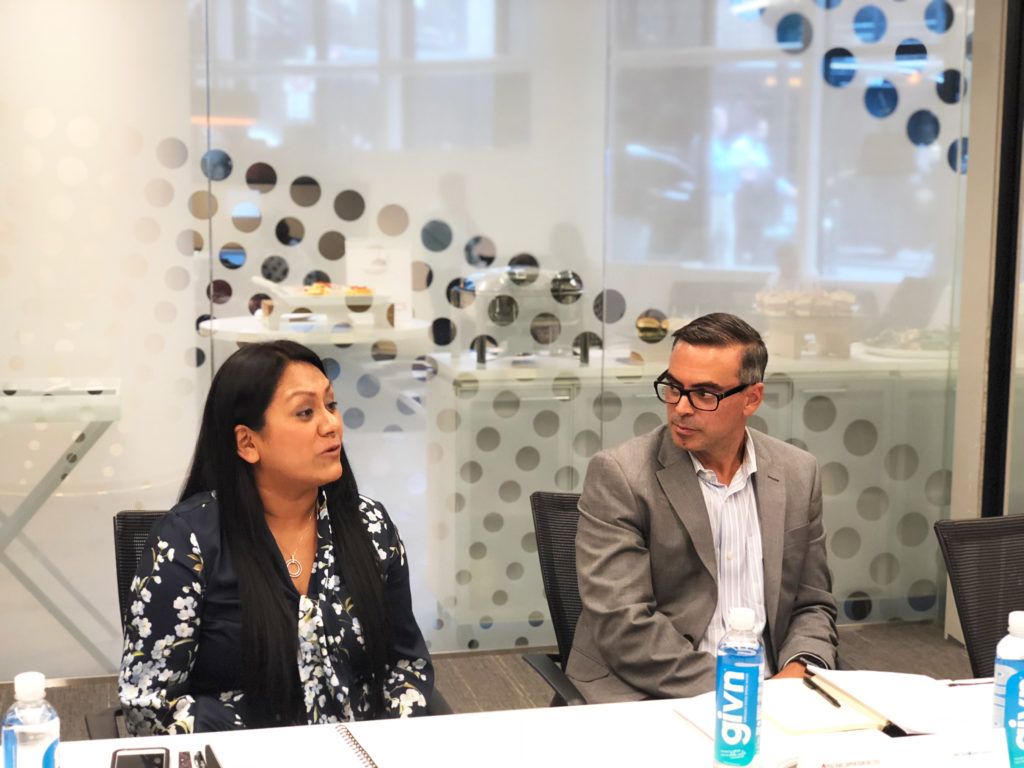
Benjamin Assor: That’s interesting, as I would also think that given your social content, you are faced with character limits, and then word limits, so you have to streamline it even more.
Betty Webb: Yes, the content has to be snackable. And digestible.
Sandy Sexton: And to Betty’s point, as with multicultural messaging, every marketer has to look deeply at who their patient is, in order to message appropriately based on which platform you’re on. Is it a tweet? Is it a YouTube video? Is it a brochure that someone’s going to take home? A text message? All of that has a major impact on what your content will be and how it will be consumed. Pulling together visuals and images, that, first and foremost, are based on research, listening to your stakeholders, doing your market research, talking directly to patients, to HCPs, to pharmacists, to caregivers, and to every single stakeholder to ensure your content is appropriate based on who the end user is, what platform you are going to be on, and which cultures you are speaking to. My team tries to show actual patients in our advertising, in our brochures—not actors—and highlight their experience with patient quotes. That also helps from an identifiable standpoint for that patient. “That’s me. Now I know this is something I should look further into.” So then if you are character-limited, you add a link, and you can now bring them onto a webpage that tells more of the story.
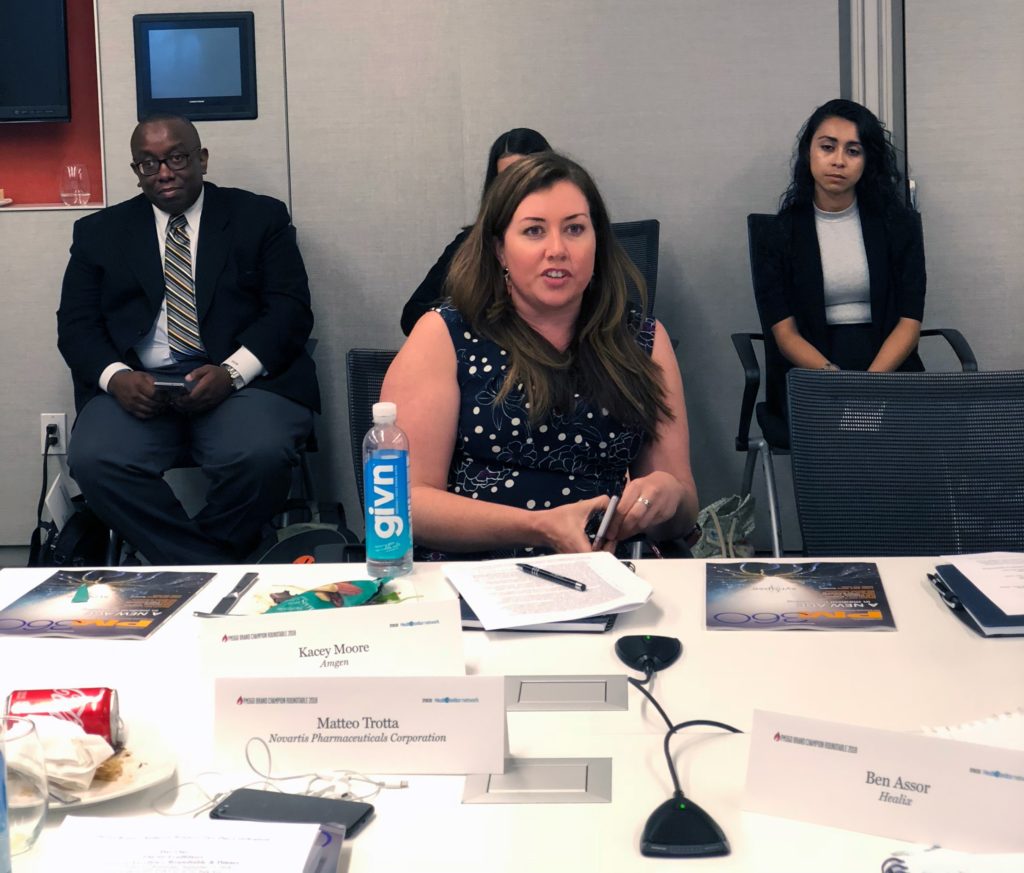
Kacey Moore: While some of the channels are new, content marketing hasn’t changed. It’s still about providing the right information at the right time to drive people down the purchase funnel. The question has always been, “What messages will get your prospect hooked? What further information is needed to get them more engaged? And then how are you providing support after conversion?
Pharma does have some unique challenges that make it different from other industries: Telling a compelling story often requires simplicity and brevity—both can be challenging with our legal and regulatory requirements.
Another challenge is the speed at which things change in some of the most critical engagement venues, such as Facebook. Just as we start to figure out how to make the platform work for our requirements, Facebook may change a format or ad unit, and now a different conversation has to happen internally. To participate in these spaces, we have to learn to be more agile.
Benjamin Assor: Does anyone feel that their organization, given these tangible challenges, recognizes the velocity at which things change? Or the need to be nimble and out as much in front of changes as we can, recognizing that there are some inherent risks?
James Smith: I think a close partnership with your regulatory teams is needed—get them involved early in terms of concept reviews and buying-in on new ideas. They might not be exposed to some of the aspects of digital and social channels, so working with them, and bringing them on as part of the effort and the planning process is huge.
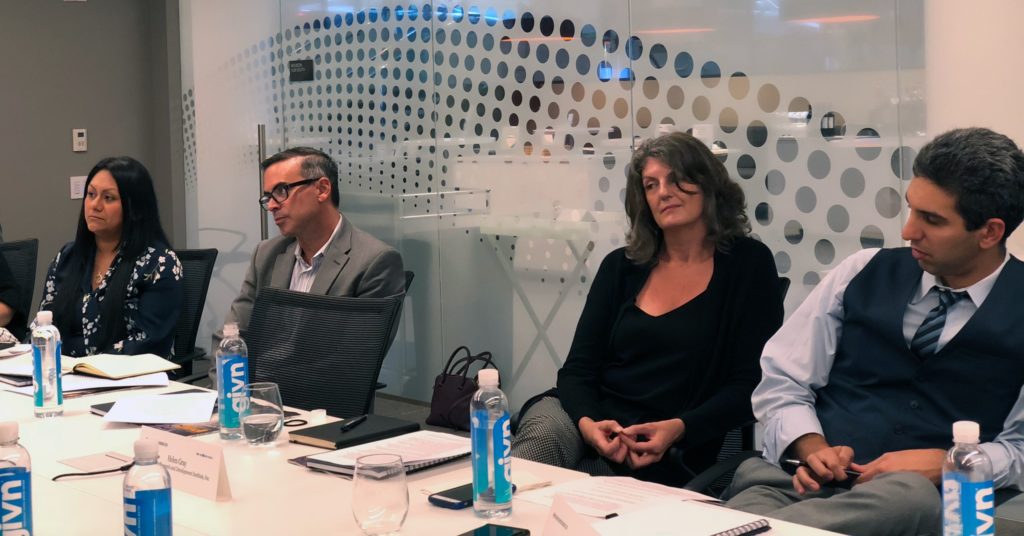
Helen Gray: I looked at this question from a slightly different perspective. One of the biggest challenges we face as an industry is an incomplete understanding of what patients need and how to communicate effectively. As an industry, we’re extremely good at telling patients what we want them to hear, but less good at telling patients what they want to know. And we’re often trying to square what we can say about our products, which is dictated by the label, versus what patients tell us really matters to them.
Matteo Trotta: I see the problem as the relative speed. We have seen in the past 5-10 years, Facebook comes out, and then a few years later, pharma gets into Facebook marketing. Twitter comes out, and then we get in. We always get there eventually, and the speed of evolution of our patient population and the time channels they use, and pharma’s evolutionary speed is getting tighter and tighter. One thing to think about going forward is to ask your teams to start anticipating upcoming trends, leveraging all the latest insights and technologies.
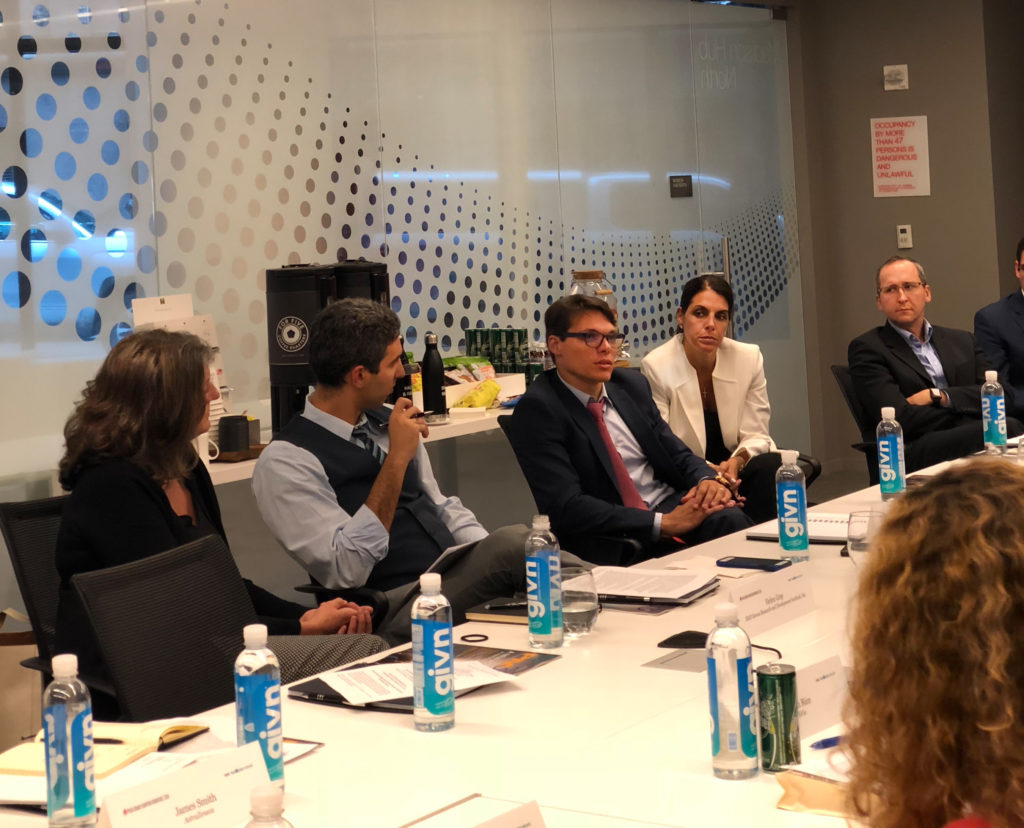
Santos Torres: So it’s back to the basics, still, from a marketing perspective. If we segment correctly and we acquire the data to figure out what our patient niche is, or our HCP niche, or whatever the niche of that product is, that then helps you become more efficient from a time and a resource perspective. You understand the behavior, you segment, and then you figure out where are they, and can I afford to get there? Because that’s the other piece. And that also helps you become more efficient with your budget, because you cannot afford everything.
Sandy Sexton: But I think that’s where your targeting gets to. So I know we started out talking about content marketing, but you’re going to build content regardless. The “where” do you put that content is just as important as the content itself. Where does it best fit?
Now you can focus on doing your targeted marketing in the offices, or supporting the patients there, talking to the HCP audience about all of your patient support programs, or you have a market where there are no other products, so you might need to plan to reach further so that patients go back into their doctors’ offices. Those are very different plans and dictate different content.
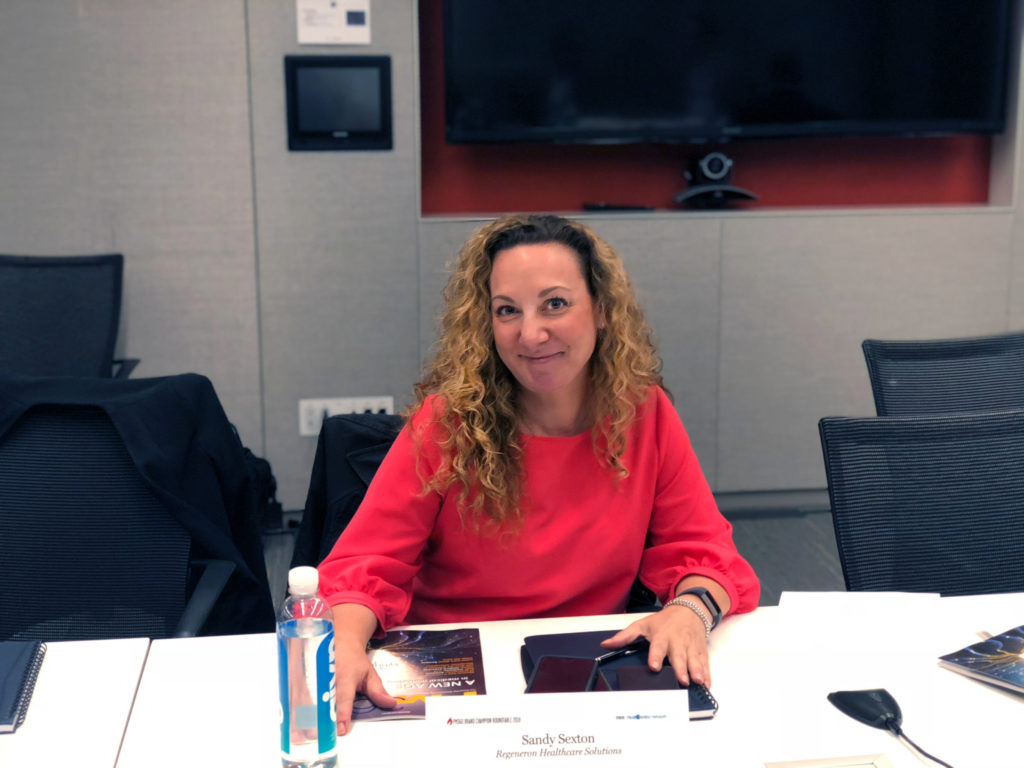
Kendra Fanara: I agree with that. We did research and found five strong patient segments. So we looked more deeply into the five. Which were the segments that we could move faster? Which ones were going to be more motivated to take action? Of the five, there were two. We walked away from the other three, and built for our two segments. The program took off. Once we got traction, we started to target the other three.
And so the question I want to ask the team, because I see many consumer experts here, is how much do you think the knowledge of the channel matters? Everybody is working on understanding the patient deeply, emotionally, from a mindset perspective, before telling them, “go and ask the doctor.” Or “this drug is going to bring your pain down to a manageable level.”
So how much knowledge of the channel works? Because if you look at Facebook right now, advertising, the vast majority of videos are absolutely wonderful, but 90-plus percent of people don’t listen to the audio on Facebook. But the knowledge of the channel could then bring you the short-term gains that you need while you still work on the more long-term, more strategic bets.
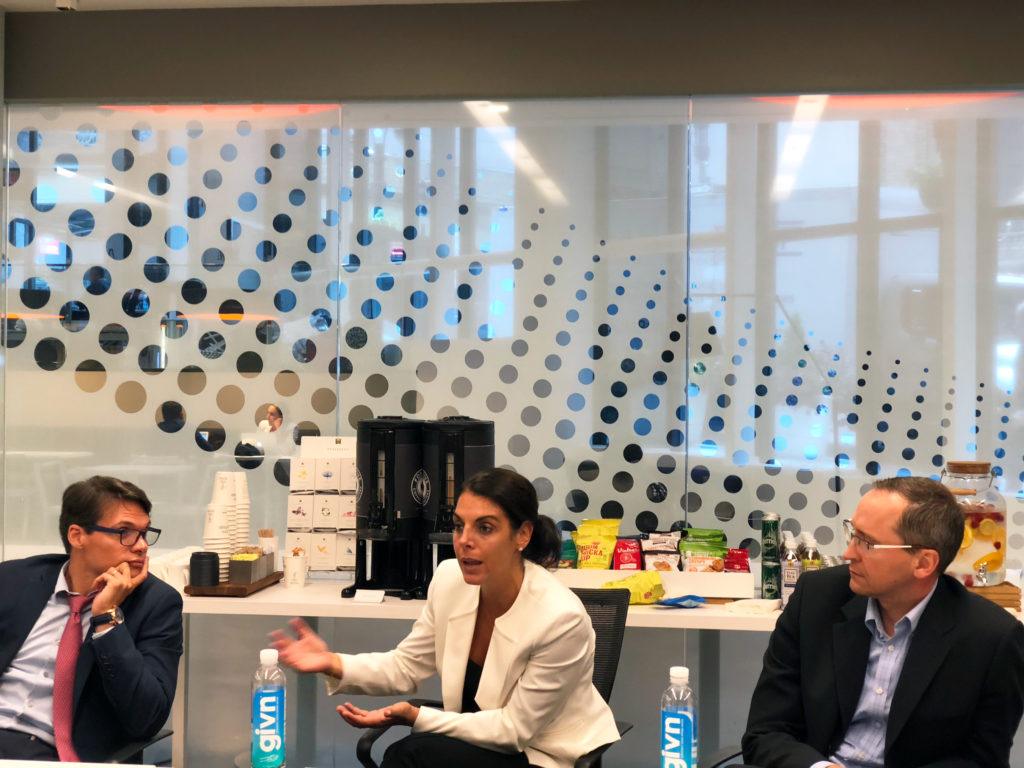
James Smith: I think it also ties back to what we discussed earlier about understanding the patient, because that changes the language we use in our materials. We have clinical messaging and the language from our label, but it’s important to listen to patients. Conducting listening research allows us to know the words and the language they use, how they describe their symptoms, and the emotional aspect of it. Using their language can help build trust, which then leads to further engagement, engaging with the brand, learning about the clinical side, and then having a conversation with their doctor.
Marian Rice: I agree. With endometriosis, in particular, women have been dismissed for decades. So we learned through lots of research that women needed to hear from other women because they’ve been complaining to their doctors about their pain and their doctors weren’t hearing them.
So we have women share their stories. They trust each other. They call themselves endo-sisters. They need to hear from other women—this worked for me, it could work for you. And doing that in social—using women’s voices to connect with other women—and then putting that on our website and in our advertising, was really powerful.
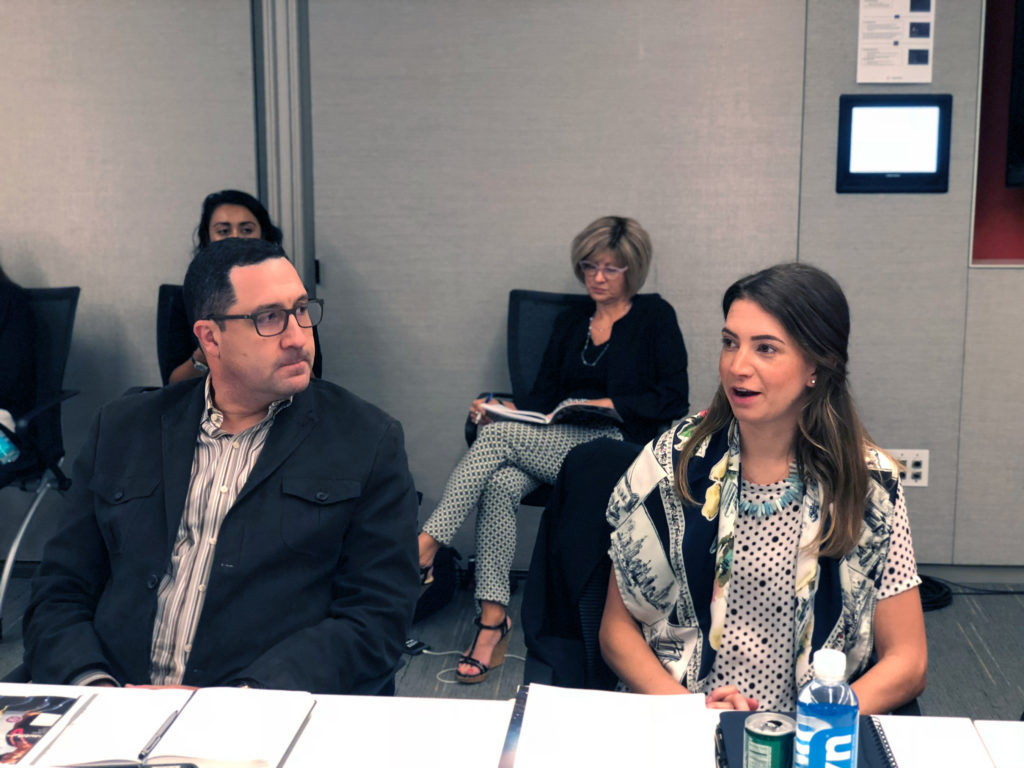
Benjamin Assor: We’ve discussed how patient engagement is morphing into different areas. Has there been a different strategy to engage physicians based upon the new dynamics that we’ve discussed—and the difficulty of seeing doctors one-on-one? Has the content that you develop for doctors evolved, too?
Helen Gray: To that point, I think the healthcare team commits to the patient that they will direct them to sources of reliable information. We want the healthcare team to say, “Go look at the drug company website. It’s really helpful.” Or, “Here’s a treatment starter kit from the drug company. The information in it is clear and balanced, easy to read.” It’s really important that we provide high-quality information that has value to the patient.
Matteo Trotta: I think at some point that marketing, regardless if it’s for an HCP or patient, will get into the middle of the conversation between those two.

Benjamin Assor: Yes, and that’s where point of care marketing comes in, right? The content in that space facilitates those conversations?
Helen Gray: Yes. And that maximizes the time when the patient is in the doctor’s office.
Benjamin Assor: Are there mechanisms, methods, or resources you use to capture consumer insights and audience insights, and are they similar on the HCP side? Do they need to be evolved and adapted? How do you collect these insights to inform more effective content marketing, messaging plans, and develop the right materials for an office?
Santos Torres: It’s the same formula. It’s just the utilization that is different. You’re still segmenting. You’re still doing the market research. You’re trying to see from a messaging and positioning standpoint where your product fits. You’re just doing it in a different way. And you have to still paint the picture and show where your product fits. The difference now is you have to add the paper piece to it as well.
Benjamin Assor: What do you see as the biggest challenge in working with the physician’s office?
Matteo Trotta: Patient access.
Kacey Moore: Going back, I agree with the thinking about risk. But I wonder, do you ever actually get to a point where, in the beginning, people are able to comprehend and establish that this is where we’re willing to risk and this is where we’re not?
Chris Horvath: Yes, promotional risk tolerance assessment is extremely important to brand teams, but not well done and not consistent across pharma companies. This is important for patient access because pharma companies can only do so much in providing services to help clinics and patients gain access to treatments while being cognizant of Federal anti-kickback laws.
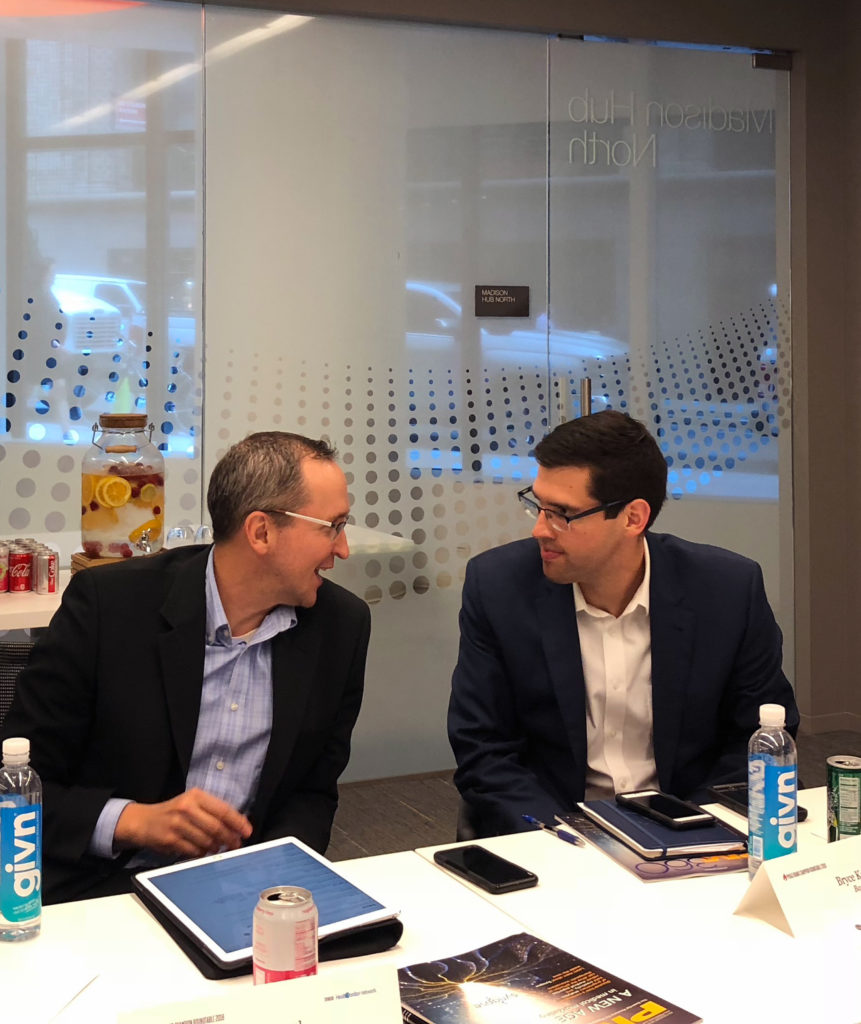
Benjamin Assor: What is the room’s reaction to the big industry-wide shift to find the audience as efficiently as we can, maybe outside of some of the environments, whether HCP or on consumer side, where the content and the context is relevant, versus an audience-first approach. Do folks feel we have gone too far one way or not the other?
Helen Gray: We absolutely need to be in both spaces. Patients need access to fair and balanced, easy to understand, scientific information about their treatment. Then they’ll flip to social media to say, okay, I understand the science, but what are, say, the side effects? Patients want to learn about others’ real-life experiences.
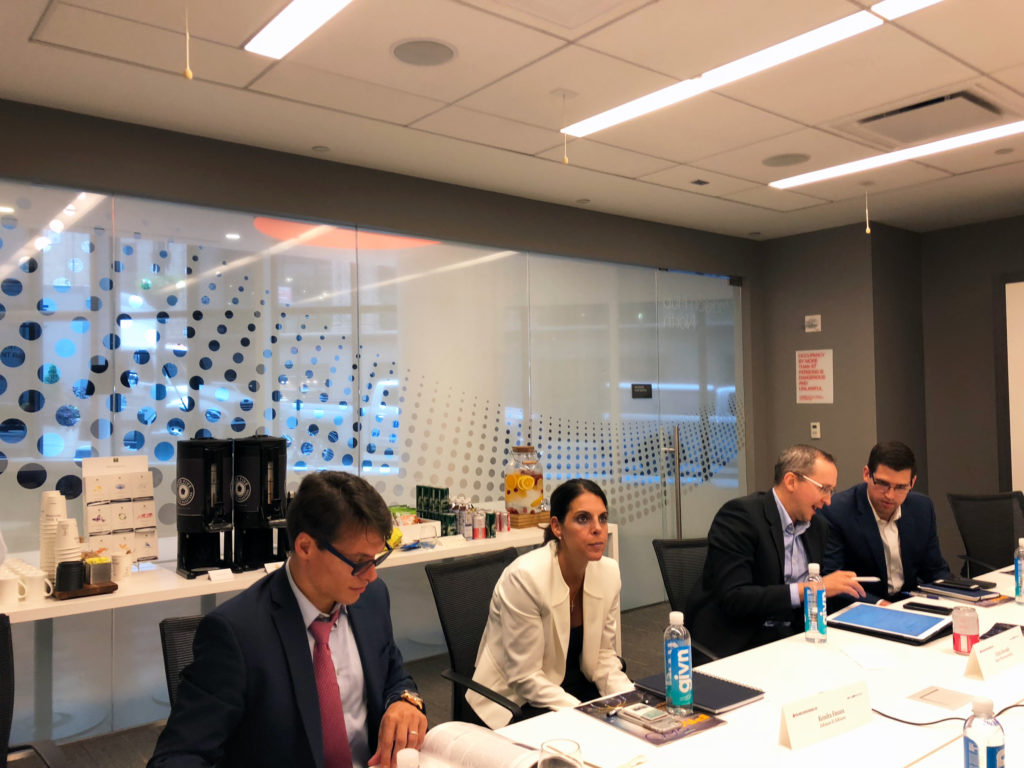
Benjamin Assor: Let’s shift a bit to talk about the convergence of the broader topic of content marketing and how it’s integrated now into the point of care space. How are you developing content, promotion materials, for point of care?
Kacey Moore: I think pharma has an opportunity to merge point of care messaging with the phone patients are holding in their hand, through mobile programs and tools.
This is a great opportunity to get patients to interact during downtime in the waiting room or exam room. If we can prepare patients for a productive discussion with their doctor via quizzes, doctor discussion guides, and everything else we often have sitting on our websites, we can deliver value to both patients and providers.
James Smith: I think it also goes back to when they leave the office. How do you keep that conversation going and really make sure that whatever product they’re prescribed, that they have the formulary information, they have the savings card, they understand why they’re taking that medicine? How can we extend the conversation pre- and then post-office visit?
Kendra Fanara: Everything “point of care” with us right now is opt in. “Opt in here to go into this program,” because once we move patients into our program and we build that trusted relationship, we can get them anywhere they need to be. If they want to get to our surgeons, we can do that for them. If they want to go our website, we can get them there.
Once patients opt in, we help them stay in the program, in that relationship with us, and educate them all the way through their treatment journey. We have HCPs in the offices promoting the program, because as we build our patient programs, we always build with HCPs input, so they want to push the program, too.
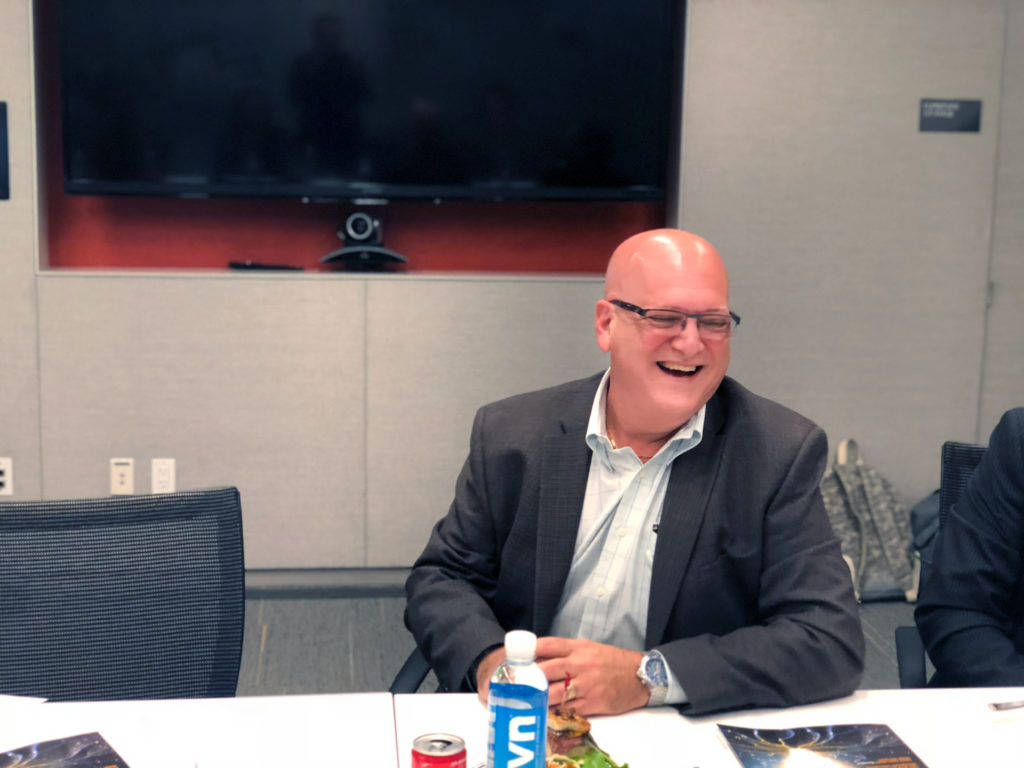
Benjamin Assor: So you have a unique set of communications objectives or KPIs for your point of care, and you focus on that, which might be different from your other DTC channels? Or are you saying everything is all opt in?
Kendra Fanara: Everything we do now has a specific call to action. We’re sending everyone to different places within our program. Everyone is opting in. If you’re a caregiver, or a provider, you’re also pushing patients to opt in, because again, once we move patients into the program, we can take them where they need to be and get them to do what they need to do—we know this because everything is digitally tagged on the back end. So every action a patient takes, everything they download, everything they read, it’s all captured, and the analytics tell us the story.
Santos Torres: Because that helps you understand what your ROI is each time you use a point of care. And it’s so important, because we’ll spend a lot of money doing that, either pre- or post. I’m doing adherence and persistency programs to pull through copay access. So for me, the call to action is if they opt in, I can help with prior auths, I can get them the copay card, I can help them address the issues at the pharmacies, through point of care. So there’s a multitude of things that you could help assist with.
But the point here is not just getting them to opt in, but also looking at your point of care from the perspective of a return on investment. What is your return on investment? What’s your KPI?
James Smith: Right. Pharmacies know so much about our patients in terms of their history, what their exact copay is, their refill habits, and they offer a variety of programs to engage and educate patients. We may not have the knowledge as an industry, but we can work with partners like pharmacies to help extend where we show up in the patient journey.
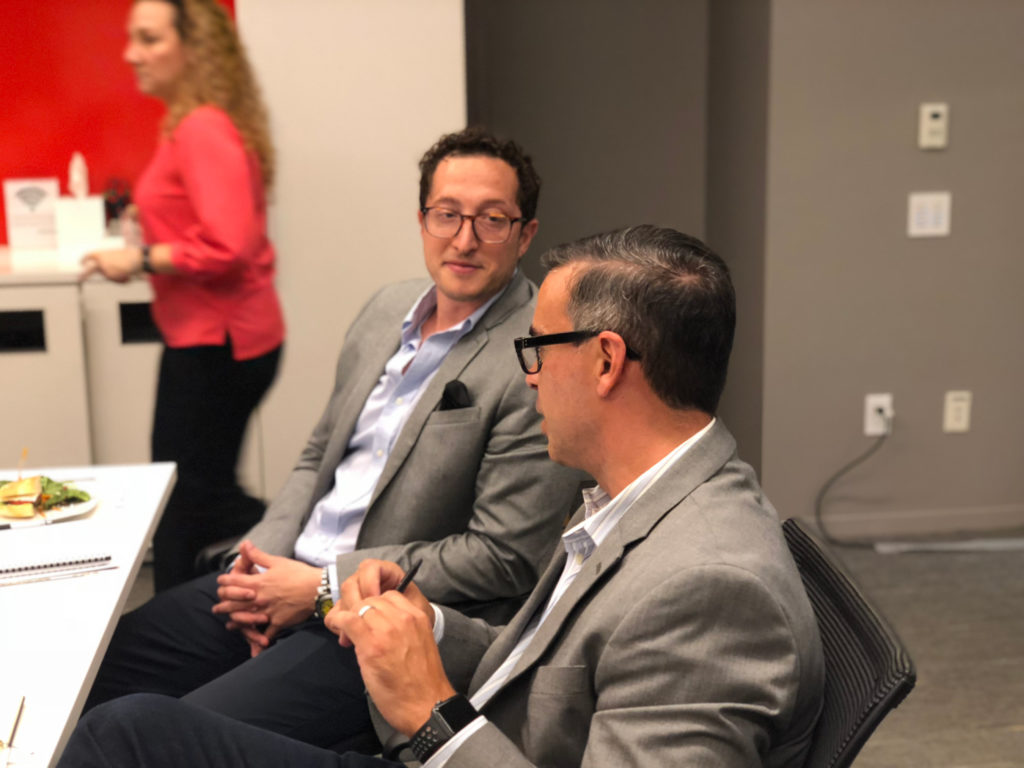
Benjamin Assor: Is that becoming an increasing trend and use case of point of care—using that channel more for the opt in piece, the collection of names and registration? Is that becoming an increasing emphasis of any point of care communication?
Helen Gray: Well, I think if you do that, you’re better able to provide real personalized care and support, real personalized content. As soon as the patient consents to be contacted and provides basic demographics, then suddenly you’re in a different space completely because you can create very much more tailored communications.
I think the question is what is the hook, to Kacey’s point. What is the hook to get the patient to opt-in to receive communications?
Santos Torres: If I could text to activate a copay card, my adherence to getting that script filled and refilled grows exponential.
Helen Gray: And this comes right back to where we started our conversation. What is it that motivates patients? What is truly important to them? And how does that differ from what we might think is important to them?
Santos Torres: That will help you strategically focus your resources where that patient or that HCP is, so that way, you’re not overspending in dollars. That’s the beauty of segmentation, that you can choose where you want to go and spend your dollars there, so that way you’re more efficient.
Matteo Trotta: Point of care is an interesting one. It’s also fast evolving and becoming more sophisticated, for example, with geo-targeting approaches where we adjust the content based on the educational need in that specific location.
Santos Torres: And then geo-targeting to CVS—they’re starting to do that. So you partner with them, and your product is about to go up for refill. All of a sudden, they could be going to the mall and they get a text message, saying “oh, by the way, CVS is telling you to refill your med of X product,” and you’re facilitating part of that.
Matteo Trotta: Yes, and on top of that, content can be adjusted based on behavioral patterns.
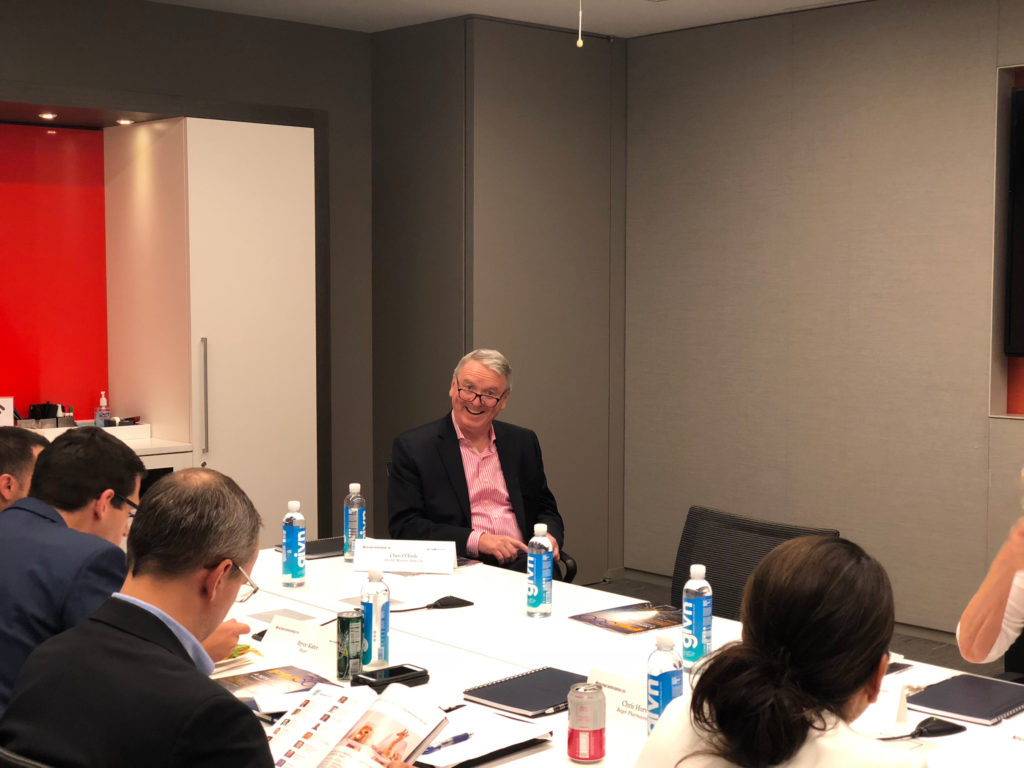
Benjamin Assor: So using that as an example (in-office mobile targeting), has anyone developed content or a banner ad that is speaking to that specific moment, versus here’s my Hero banner campaign that I’m just going to place in that moment?
Kacey Moore: We’re working on that. Step one is just to be there and use the content you have. But step two is how you actually deliver something that recognizes that there’s an opportunity to engage, and also where they are, and…
Benjamin Assor: It’s unique and specific for that moment.
Kacey Moore: Exactly. And to drive the behavior change that you’re looking for.
Santos Torres: So I’ve learned a lot from physician conventions, and what I’ve done: If a doctor who’s in my segment goes to a particular convention, as soon as they go in, from a geo-fencing perspective, that doctor gets a reminder about my product.
That allows me to use my money, target it there, versus spending it on a banner at the convention. I’m pushing them toward the booth. Then my spend—you could spend a lot of money in a convention—drastically changes, because I just geo-targeted by using my segmentation to get to that position.
James Smith: That’s similar to the machine learning that we were talking about earlier, figuring out what kind of nudge works. Is it an outbound call, a text, an email, at what frequency? What does that communication look like? All of that is happening. Pharma is quickly moving in that direction.
Benjamin Assor: Great, guys. Thank you all for sharing so much. Because we’re all drawing a lot of experiences from each other, and we’re all using analogues in one company or another to advance the overall betterment of healthcare. So the more that we keep working and pushing the boundaries and taking some risks, I think we’ll all be better off, and our patients and our stakeholders will all be better off.
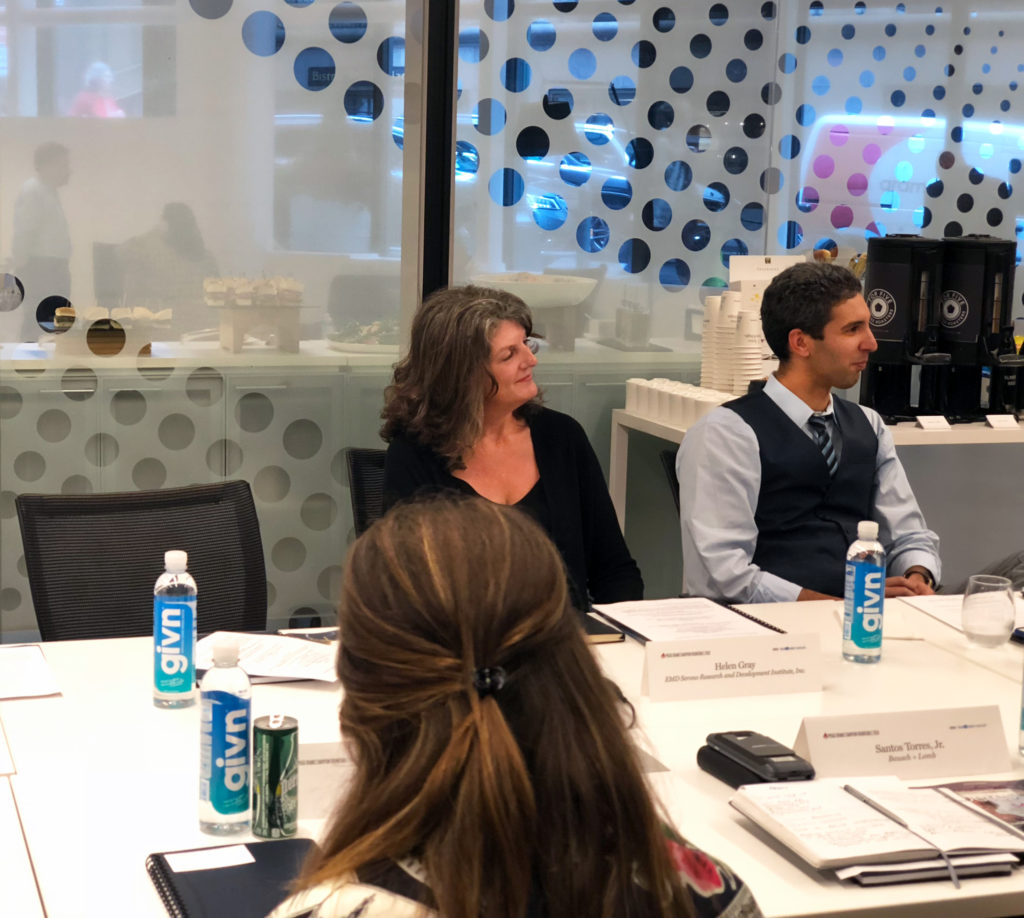
Helen Gray: Our patients will be. I’d like to finish on a patient note, that people who live with the diseases we treat deserve access to information, and if we can get information to them in a way which resonates, they can consume it, they can understand it, then that’s got to be good for the patient. So it’s critical.
The opinions expressed in this article are the participants’ own and do not necessarily reflect those of their affiliated companies or organizations.





